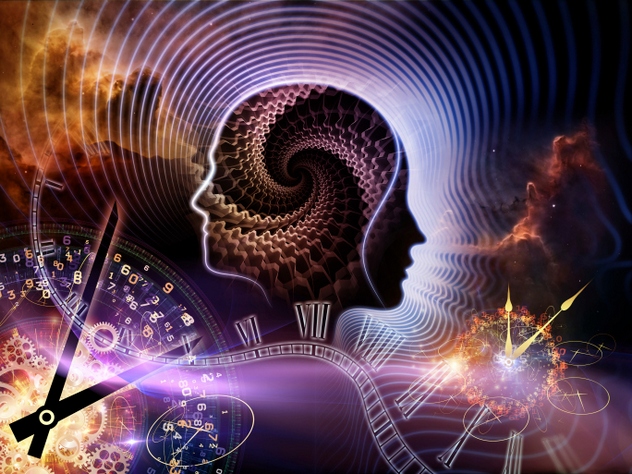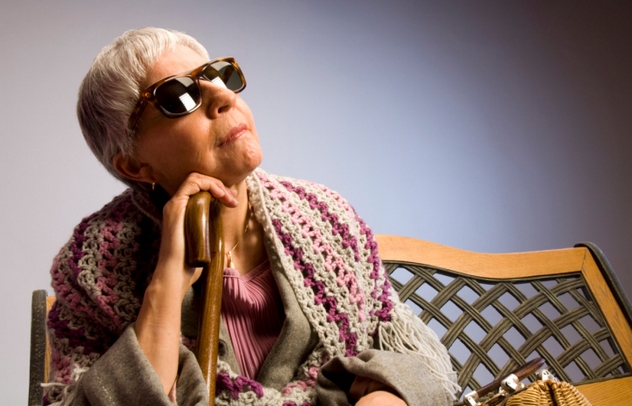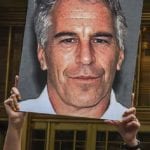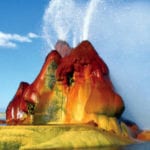 Weird Stuff
Weird Stuff  Weird Stuff
Weird Stuff  Mysteries
Mysteries 10 Tragic Disappearances and Deaths in Joshua Tree National Park
 History
History 10 Ways Childhood Really Sucked in the Old West
 Music
Music 10 Name Origins of Famous Bands from the 1990s
 Religion
Religion 10 Biggest Turnarounds by the Catholic Church
 Weird Stuff
Weird Stuff 10 Unbelievable Times Laws Had Unintended Consequences
 Humans
Humans Ten Historic Women Who Deserve Way More Credit Than They Got
 Movies and TV
Movies and TV 10 Films That Spawned Major Lawsuits
 History
History Ten Times Towns Were Wiped Off the Face of the Earth
 Creepy
Creepy 10 of the Most Disturbingly Haunted Public Houses in the UK
 Weird Stuff
Weird Stuff 10 Niche Subcultures That Are More Popular Than You Might Think
 Mysteries
Mysteries 10 Tragic Disappearances and Deaths in Joshua Tree National Park
 History
History 10 Ways Childhood Really Sucked in the Old West
Who's Behind Listverse?

Jamie Frater
Head Editor
Jamie founded Listverse due to an insatiable desire to share fascinating, obscure, and bizarre facts. He has been a guest speaker on numerous national radio and television stations and is a five time published author.
More About Us Music
Music 10 Name Origins of Famous Bands from the 1990s
 Religion
Religion 10 Biggest Turnarounds by the Catholic Church
 Weird Stuff
Weird Stuff 10 Unbelievable Times Laws Had Unintended Consequences
 Humans
Humans Ten Historic Women Who Deserve Way More Credit Than They Got
 Movies and TV
Movies and TV 10 Films That Spawned Major Lawsuits
 History
History Ten Times Towns Were Wiped Off the Face of the Earth
 Creepy
Creepy 10 of the Most Disturbingly Haunted Public Houses in the UK
10 Oddball Things To Make You Believe In An Afterlife
Here’s a cheerful thought for you: You’re going to die. Maybe not today, maybe not tomorrow, but one day your brain will shut down, your heart will stop beating, and you’ll fall into an endless nothing from which no one can ever return. Depressing thought, huh?
Or is it? While most of us may think death is the ultimate end, there’s plenty of evidence out there to suggest otherwise. And while we’re not prepared to call it conclusive, it does make you start to wonder whether death really is the grand finale we think it is.
10Consciousness Continues After Death
Dr. Sam Parnia is a guy who knows about death. Hugely respected in the field of resuscitation, he’s a driving force in getting word out about procedures that could help revive patients many hours after cardiac arrest. However, he also has a side line in the paranormal. And what he’s found out about consciousness is interesting, to say the least. According to multiple interviews he’s given on the subject, Dr. Parnia is convinced human consciousness can survive brain death—the point when there’s zero blood or electrical activity in the brain.
Since 2008, he’s collected multiple accounts of near-death experiences (or, as he calls them, “after-death” experiences), which seem to have taken place when the subject’s brain was about as active as a loaf of bread. (Studying near-death experiences, or NDEs, is about as close as we can reasonably come to studying death or the afterlife, so they’ll feature heavily on this list.) Very specifically, he reports that there is almost no chance these memories of white lights and tunnels and so on took place immediately before or after brain death; and that the idea of this being some sort of a low-level brain activity is utterly ludicrous. In other words, they should be impossible.
Now, to be fair, Parnia stops short of actually endorsing any supernatural explanation. Instead, he suggests we just don’t understand how consciousness works yet. Still, it does open the doors to the possibility of an afterlife, especially when combined with the other stuff on this list.
9Verified Out-Of-Body Experiences
In 1991, singer-songwriter Pam Reynolds developed a deadly aneurysm. Faced with the choice of dangerous surgery or certain death, Reynolds opted for the risky procedure. Placed in an artificial coma, her body was then super-chilled to 15.5 degrees Celsius (60 F), while literally all the blood was drained from her brain. At the same time, her eyes were taped shut and her ears plugged with molded speakers that drowned all noise and allowed the monitoring of brain stem activity. She was, in the words of her neurosurgeon, Robert Spetzler, “as deeply comatose as you can be and still be alive.”
It was at this impossible point that Reynolds had her experience . Suddenly floating above her body, she looked down to see 20 people at work. A woman by her left groin was saying “her arteries are too small.” A surgeon was holding a specialized brain saw behind her head. “Hotel California” by The Eagles was playing. She watched for a while then left for a tunnel of light, only returning to her body much later. Months after the operation, she told Spetzler about her experience—and was shocked to hear him verify every detail.
Now, we should point out that Australian researcher Gerald Woerlee (who was not present at the operation) believes he has fully debunked this anecdote. But we should also point out that Spetzler and cardiologist Michael Sabom refute his findings. Even if Reynolds could somehow hear conversations, they insist that it would have been biologically impossible for her brain to form or retain memories at that time. Further, there’s the fact that she managed to perfectly describe a specialized piece of medical equipment she’d never seen before. As a one-off anecdote, it may not be proof of life after death, but it sure is tricky to dismiss.
8Meetings With The Dead
One of the classic components of a near-death experience is meeting dead relatives on the other side. If most of us were to give this much thought, we’d probably conclude that it was due to extremely vivid hallucinations. But Dr. Bruce Greyson of the University of Virginia thinks there’s more to this than meets the eye.
In a paper published in 2013, he noted that the number of patients who record meeting dead people far outweighs those who report meeting live people. If these were random hallucinations, you’d expect as many people to be welcomed into the afterlife by, say, Barack Obama as their dead grandma. But even more interesting are the few verified cases where a subject has met a dead relative on the other side, despite having no way of knowing that this person had died. And that’s before we even get into the cases of people meeting their never-before-seen biological parents and later describing them accurately.
Obviously, these reports are mostly anecdotal and therefore of limited scientific value, but they do raise the disturbing possibility that your long-dead great grandma is watching every time you shower.
7Extreme Reality
Dr. Steven Laureys is a man who absolutely does not believe in life after death. A director at the Belgian National Fund of Scientific Research, he is firm that all NDEs can be explained away through physical phenomena. Nonetheless, his research into such experiences has thrown up some facts which are difficult to explain away.
Chief among these is the “hyper-reality” of NDEs. When Laureys and his team set out to study the memory of these events, they expected to find they worked in the same way as dreams or hallucinations: becoming more faded as time went by. Instead, they found the exact opposite. Rather than become dull with age, they found that the memory of an NDE stayed vibrant and fresh no matter how much time had passed—to the extent that it completely eclipsed the memory of real events.
This isn’t supposed to happen. Generally, the only memories that are meant to stay vibrant are the big ones—like your wedding day or the birth of your kids or watching the Twin Towers come down. These patients were unanimously reporting that their NDE was more vivid than all of that combined, with the added bonus that it never faded. They retained perfect recall of that moment, convinced they’d experienced a fragment of heaven.
Dr. Laureys doesn’t believe this is anything supernatural. However, he does believe all of us probably go through this when we die: an experience of “heaven” more intense than anything we’ve felt in all our waking lives. In its own way, that might even count as an afterlife of sorts.
6Similarities

One of the most peculiar aspects of NDEs is how similar they all are. If such visions can be accounted for by the random firing of brain cells, then surely they should all be wildly different. The trouble is, every NDE report is anecdotal. As such, there’s no telling whether NDEs are the same because that’s what happens when we die, or if they’re the same because people’s memories change and are influenced over time. At least that was the case until a team of Dutch researchers decided to find out for sure.
In a study published in a highly respectable journal, The Lancet, the team looked at 344 patients who suffered cardiac arrest. They then got them to talk about their experiences within one week of resuscitation. Of those questioned, 18 percent could remember at least bits of what happened and 8–12 percent recalled perfect examples of a classic NDE.
That’s roughly between 28 and 41 unconnected people from 10 different hospitals recalling near-identical experiences over a comparatively short period of time. At the very least, this suggests that such memories aren’t false. While the team refrained from supernatural explanations, they did hypothesize it meant consciousness doesn’t arise from cell activity alone—potentially meaning our minds don’t always need a body to function.
5Personality Changes
Remember how we said people who experienced NDEs usually retained perfect recall of the event? Turns out those memories have consequences—and they’re all positive. One of the doctors in the Dutch study above, Pim van Lommel, began looking into the effect of such memories in 2001. He found that they caused a “permanent change” in the subject. People lost their fear of death, became happier, more positive, and more outgoing. Nearly all of them reported their NDE as a hugely positive thing that had even more impact on their lives as time passed.
Interestingly, these changes weren’t just restricted to people who were predisposed to positivity or religious belief. No matter what their personality was before, those who’d experienced NDEs tended to share a very similar psychological profile afterwards. As Dr. Mario Beauregard noted in an article for Salon, “importantly, these psychological and behavioral changes are not the kind of changes one would expect if this experience were a hallucination.” According to Dr. Lommel, the most likely explanation is that the nature of consciousness means it can be experienced separately from the body, meaning NDEs are, in effect, real.
4Firsthand Experience
In 2008, neurosurgeon Dr. Eben Alexander contracted a form of meningitis that resulted in E. coli bacteria flooding his brain. He was quickly hospitalized and put in a coma for the best part of a week. Exactly what happened to him during the course of that week has become the subject of great debate.
According to Dr. Eben himself, his brain essentially became a vegetable. His neocortex was offline and he was incapable of any higher thought or brain activity. He was basically due to die any second, at which point his “soul” went on a seven-day journey that is part-NDE and part 60s-style acid trip. What he claims to have seen sounds at times dangerously like nonsense, but less easily dismissible is his assertion that his brain was being monitored in minute detail every moment of that weird week. As far as he is concerned, it is a matter of verifiable fact that his brain was offline during his vision, to the point that it should have been incapable of producing even a dim and limited version of consciousness.
However, not everyone was convinced and several impressive attempts have been made to debunk his story. A representative one can be found here, while Dr. Eben’s response to these criticisms can be found here. We’ll let you decide whom you find most convincing, but if Eben is telling the truth, then his experience of death and those of others like him should not be ignored.
3Visions Of The Blind

Extraordinary claims rarely come more extraordinary than those of Kenneth Ring and Sharon Cooper in their book Mindsight. In brief, years of research have convinced the two professors that people who were born blind often regain their sight during an NDE.
According to Salon, the pair interviewed 31 blind people for their study, all of whom claim to have had either an NDE or an OBE (out-of-body experience). Of them, 14 had been blind from birth. Yet they all reported a visual component to their experiences, whether in the form of a tunnel of light, seeing dead relatives, or even looking down on their own bodies from above. In other words, they appeared to prove the impossible.
Again, it needs to be noted that this is far from conclusive. The entire study was based only on what their subjects could tell them, which is not a scientifically rigorous way of testing something. At the very least though, their subjects genuinely believed they’d had these impossible experiences—which raises the unsettling question of how someone blind from birth could be capable of describing anything visual.
2Quantum Physics May Allow It
Biocentrism is a borderline-crazy, totally counterintuitive theory about the universe that tiptoes around the far-flung edges of acceptable mainstream science. That being said, there’s also the faintest possibility that it’s true. And if that’s the case, then it also makes an afterlife not just a possibility, but a certainty.
Pioneered by Professor Robert Lanza, the theory relies on the famous double-slit experiment, which suggests (among other things) that all possibilities in the universe happen simultaneously. It’s only when an “observer” chooses to look that all these possibilities collapse into a single one—the one that happened in our universe. According to Lanza, we can take this premise and blow it up to encompass everything.
If we do this, then time, space, matter, and everything else should only exist because of our perception of them. If that’s true, then it means things like “death” stop being solid facts and become merely a part of this perception. In effect, although we may appear to die in this universe, Lanza’s theory states our life should then become “a perennial flower that returns to bloom in the multiverse.” His theory is almost certainly nuts. But if it does turn out to be true, then it would mean the multiverse doesn’t just allow us to return after death, it physically demands that we do so.
1Children May Remember Their Past Lives
Doctor Ian Stevenson may have one of the strangest claims to fame: He’s possibly the first person in history to have provided proof of reincarnation.
If that sounds crazy, wait till you read the rest. Over the course of four decades, Stevenson meticulously researched and documented cases of children apparently being able to recall their previous lives. And we don’t mean he indulged in some kid’s make-believe fantasy of having been an emperor. We mean he recorded over 3,000 cases of children under the age of 5 who had very specific knowledge of the lives, loves, and deaths of people they couldn’t possibly have known about.
In one documented instance, a Sri Lankan toddler overheard the name of a town she’d never been to. Immediately afterwards, she told her mother she’d been accidentally drowned there by her mentally-handicapped brother, before describing the town in great detail. She also supplied details of the family she’d belonged to, including what they looked like, what their house was like, and what her name had been. Twenty-seven out of 30 of her wild claims later checked out. Neither the girl, nor her family, nor anyone she knew had any prior connection to this town or the dead child.
But the weirdness doesn’t stop there. Stevenson documented children who had phobias linked to previous deaths, children with birth defects that mirrored their manner of dying, and even three children who flew into a screaming rage when they recognized their “murderers.” In nearly every case, he could link the child’s claims to an unconnected real person; and each time he investigated a case, he left behind research so thorough it would put most mainstream academics to shame.
Now, before we declare this final proof of life after death and throw away all our critical faculties, we should point out that Stevenson’s work isn’t totally watertight. As this essay shows, several of his studies may have been contaminated by using unreliable translators and his research as a whole relies on putting a whole lot of trust in a succession of random strangers. In other words, his work is probably thorough enough to convince the agnostic, yet nowhere near airtight enough to win over the skeptic.
But if there’s one thing we can take from the case of Dr. Stevenson and others on this list, it’s that we probably shouldn’t fear dying. Who knows? It might even be the best darn thing that will ever happen to us.








